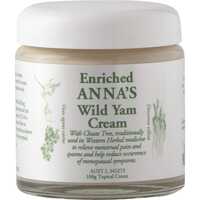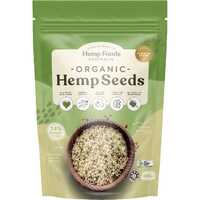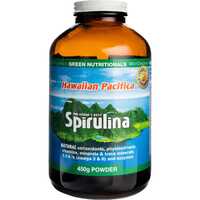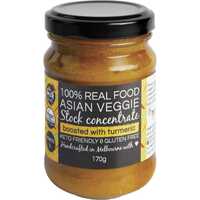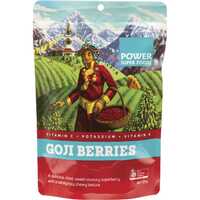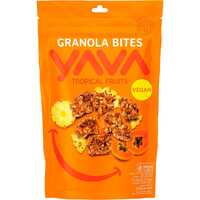In this article, we're taking our global health food tour to Southeast Asia. This part of the world includes the 11 modern countries situated south of China, east of India, and northwest of Australia. The most populated nation is Indonesia, followed by the Philippines, Vietnam, Thailand, Myanmar, Malaysia, Cambodia, Laos, Singapore, East Timor, and Brunei. Southeast Asia covers just 3% of the world's total land area, but it represents 8.5% of the global population. This culturally and ethnically diverse region has numerous religions, hundreds of languages, and some of the best food on the planet.
Let's dive deep into the Southeast Asian diet, looking at traditional cuisine and healthy superfood ingredients from this special part of the world.
Traditional Cuisines From Southeast Asia
Southeast Asia is comprised of many beliefs, cultures, and islands. The food from this region varies considerably, with each country having its own native ingredients and cultural heritage. All local cuisines have been influenced by occupation and trade in some way, as traditional ingredients are merged with new and exciting flavour combinations.
For example, Vietnam enjoys a diverse mix of flavours due to previous French occupation, and Indonesia has eliminated pork since embracing Islam. In a similar fashion, Filipino food contains hints of Spanish and American cuisine, which has helped to shape the national diet. Southeast Asian dishes are also heavily inspired by other Asian cuisines. For example, Cambodian cuisine has strong Indian influences, Javanese cuisine from Indonesia has strong Chinese flavours, and food from Brunei is heavily influenced by Japan.
Despite these differences, there are many common ingredients that define Southeast Asian cuisine. Rice is the regional staple, both in its original form and also as rice noodles and vinegar. The use of soy sauce is also widespread, and aromatic flavours like garlic, ginger, chilli, and lemongrass are extremely popular. Nuts, legumes, fruits, and vegetables are eaten across Southeast Asia, along with red meat, chicken, and fish. Due to global trade, this region enjoys similar herbs and spices to the rest of the world, with favourites including turmeric, coriander, mint, cumin, and cardamom.
Flavour Combinations and Eating Habits
Modern chefs from this part of the world have many tools at their disposal, with different ingredients, textures, and temperatures used to create the perfect balance. Southeast Asian dishes often use a complex mix of herbs and spices to create a harmonious blending of flavours. Along with shared geographic and historic influences, Southeast Asian cuisine is defined by how it combines sweet, sour, salty, and bitter ingredients.
Unlike most European cultures, there are no individual courses in Southeast Asian cuisine. Instead of presenting isolated foods in a sequence, everything is offered at once and enjoyed with family and friends. This has a pronounced influence on the flavour profile of regional dishes, with different ingredients balanced in a single serving instead of being spread out among multiple dishes.
Modern Food Trends
Due to increased globalisation, this part of the world is going through a major food transition. Traditional dietary patterns are rapidly shifting, with the increased consumption of processed food affecting people of all ages. There is a pronounced shift away from the traditional diet, which is rich in unrefined grains, legumes, fruits, and vegetables. Instead, refined carbohydrates, sugars, and fats are taking their place and causing numerous health problems. While the traditional diet is still followed by millions of people, increased access to affordable but poor-quality food is definitely having an impact.
Superfoods From Southeast Asia
Southeast Asia has a mostly tropical climate with lots of heat and plenty of rainfall throughout the year. This leads to rich and varied native vegetation, along with a number of intensively managed orchards and commercial plantations. Southeast Asian cuisine is also dependent on the sea, with every country in this region having access to an extensive coastline and many nations completely enveloped by the ocean.
Whether grown in majestic mountains, cultivated in fertile valleys, or harvested from the sea, the following Southeast Asian ingredients are among the very best:
Seaweed
Edible seaweed has become very popular over recent years. A large variety of sea vegetables are consumed as foods, taken as supplements, and used for their emulsifying properties. Most edible seaweeds come from marine environments, with freshwater algae often toxic. Southeast Asia is comprised of more than 25,000 islands, with sea in every direction and seaweed consumed on a large scale.
A variety of seaweeds are used in Southeast Asian cuisine, including nori, dulse, wakame, chlorella, guso, and sea grapes. These seaweeds are incredibly versatile, being used in sushi wraps, soups, stews, salads, snacks, and noodles. Many seaweed variants contain high levels of fibre, along with numerous proteins, vitamins, and minerals like calcium and magnesium. Depending on the source, seaweed is a potential source of vitamin B12 for vegans, along with certain mushrooms and fermented beans and vegetables.
Depending on how they're prepared and cooked, seaweed can be eaten for breakfast, lunch, and dinner. In the Philippines, sea grapes are made into nori-like sheets called gamet, which are used throughout the day in various dishes. Seaweed can also be made into noodles, cooked into spaghetti, or made into flakes for salads and cereals. While sweet seaweed dishes are not particularly well-known in the West, es campur from Indonesia and buko pandan from the Philippines are both derived from seaweed jellies.
Spirulina
Spirulina is a bona fide superfood from the sea, and it grows exceptionally well in the tropical waters of Southeast Asia. While spirulina is not a seaweed, this single-cell blue-green algae is often put into this category. Spirulina is widely available as a powder, which makes it very easy to consume. You can add it to smoothies, juices, and shakes or add a pinch to salads, soups, and cereal bowls. Spirulina has a bright green colour due to high chlorophyll levels, which is the pigment used by plants to absorb energy from the sun.
Spirulina is the dried biomass of Arthrospira platensis, which is a powerful source of proteins, antioxidants, minerals, and vitamins. With just a small portion of spirulina, you can expect high levels of thiamin, riboflavin, niacin, and folate, along with vitamins A, B6, and K. Spirulina also has lots of copper, magnesium, potassium, and manganese, which makes it a very well-balanced nutritional source. Famously, this rich blue-green algae is even promoted by NASA as a dietary supplement for astronauts.
Goji berry
Goji berries have definitely caught the world's attention. This sweet, nutritious fruit has long been used in Asian cuisine, and it's also an ingredient in traditional Chinese, Japanese, and Korean medicine. Goji berries are mostly associated with mainland China, but they're also native to the tropical regions of Southeast Asia and South Africa. Goji berries contain high levels of healthy antioxidants, which help to fight harmful free radicals and inflammation. They also have significant levels of vitamins A and C, along with fibre and natural sweetness.
Since being noticed by the West, goji berries have become a popular addition to health bars, trail mixes, and cereals. In traditional Southeast Asian cuisine, the plant that produces these berries also has other uses. Young goji berry shoots and leaves are harvested as a leaf vegetable, and the berries themselves are used fresh as a garnish. Across Southeast Asia, these delicious berries are used in soups, salads, and porridge dishes. When bought in dried form or added to bars and bites, they make the ideal on-the-go health food snack.
Tropical fruits
Due to the fertile environment and wet climate of Southeast Asia, the area is full of unique fruits and vegetables. Global favourites like banana, papaya, and mango come from this region, and you'll also find fruits with exotic names like durian, dragon fruit, rambutan, and jackfruit.
Durian grows throughout Southeast Asia, with this unique fruit notorious for smelling bad but tasting great. It has a spiky outer shell that almost looks like a weapon and a creamy, custard-like interior. Durian has a lovely sweet flavour that's much subtler than its aroma would suggest, and it's full of vitamin C, thiamine, and manganese.
Dragon fruit, also known as pitaya, has a sweet and subtly tart flavour. While this fruit is native to Central America, it's cultivated in many Southeast Asian nations. Dragon fruit is low in calories and high in fibre, along with lots of beneficial antioxidants, phytonutrients, healthy fatty acids, and probiotics. It also has lots of vitamins and minerals, including iron and magnesium.
Rambutan originates from the rainforests of western Malaysia, Indonesia, and Singapore. It's also very popular in the Philippines, where its seeds are roasted and eaten as a snack. The flesh of this tropical fruit contains lots of carbohydrates and manganese, and rambutan seeds contain lots of healthy fatty acids.
Jackfruit is native to tropical Asia, including the southeastern nations of the Philippines, Indonesia, and Malaysia. Known as "nangka" in the Philippines, this large fruit is related to figs and mulberries. Jackfruit has lots of dietary fibre and other carbohydrates, and it's also a rich source of vitamin B6, vitamin C, and potassium. Young jackfruits are often cooked and added to salads, curries, and soups.
When you need high-quality health foods from across the world, Healthy Being is your trusted local supplier. We have natural seaweeds, spirulina supplements, goji berries, and dried fruit products in various forms. So check out our website today for unbeatable prices across thousands of products from the world's most trusted brands!


 Certified Organic
Certified Organic Vegan Friendly
Vegan Friendly  Vegetarian
Vegetarian Organic Ingredients
Organic Ingredients Dairy Free
Dairy Free Gluten Free
Gluten Free Keto Friendly
Keto Friendly

















